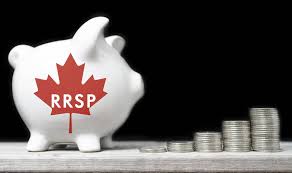 Registered Retirement Savings Plans (RRSPs) are a great way to put money aside for retirement, however, there are some things you should know about RRSPs before putting your hard-earned money into one.
Registered Retirement Savings Plans (RRSPs) are a great way to put money aside for retirement, however, there are some things you should know about RRSPs before putting your hard-earned money into one.
RRSPs provide a way to defer income tax, but they do not always provide a tax benefit.
When you contribute funds into an RRSP, you get a tax deduction on your personal tax return. What this means is that your contribution may reduce your income tax payable now, but you will have to pay tax on the money in the future when you withdraw it. It is a way to defer income tax payments.
However, if you are not taxable, there is no tax benefit for contributing to an RRSP. Additionally, if you expect to be in a higher tax bracket when you want to withdraw funds from an RRSP, then there is also no tax benefit from contributing to an RRSP as you will end up paying more tax on the funds later than you would have paid now had you not put money into an RRSP.
So, as you can see, there is not always a tax benefit when you contribute to an RRSP.
Tax is withheld when you withdraw funds from an RRSP.
Whenever you withdraw funds from an RRSP, there will be a minimum amount of tax withheld up front. Then, when you file your personal tax return, you will pay any additional tax owing as a result of your RRSP withdrawal. This is because when you withdraw from your RRSP, the amount withdrawn is considered income and is taxable.
There are penalties for overcontributing to an RRSP.
You can determine your RRSP contribution limit by looking at last year’s notice of assessment (NOA) that you would have received from the Canada Revenue Agency (CRA). You want to make sure that if you are planning on contributing this year, that you do not exceed the amount stated on the NOA. There are penalties for over-contributions exceeding $2,000 and interest is charged daily up until you withdraw the funds. There is also no tax deduction associated with amounts contributed that exceed your contribution limit. As such, you want to be sure to not contribute any more than your stated contribution limit.
You have various investment options within an RRSP.
When contributing funds into an RRSP, be sure that you select an investment that is appropriate for your risk tolerance and time horizon. For example, if you plan on retiring within the next five years, it would be more appropriate to invest in less risky investments than someone who is just starting out and has several years before retirement. Ensure that you don’t just put money into a low interest savings account within an RRSP as then you bear the risk that your funds will not earn enough even to keep up with inflation, which means, you will still be losing money.
RRSPs are just one way to save for retirement.
RRSPs are useful if they provide you with a tax benefit. However, if they don’t, then RRSPs are not the best way to save for retirement. Consider other options such as taking advantage of a Tax Free Savings Account (TFSA), and once you have maximized the TFSA contribution limit, then consider investing in non-registered investment accounts or investing in other things such as real estate.
To conclude, RRSPs can be a very useful tool for tax savings, especially for employees who have very limited deductible expense to offset their employment income. However, before you start putting money away in RRSPs, be sure to understand what you are getting yourself into, as RRSPs aren’t always the best choice for retirement savings.

No Comments